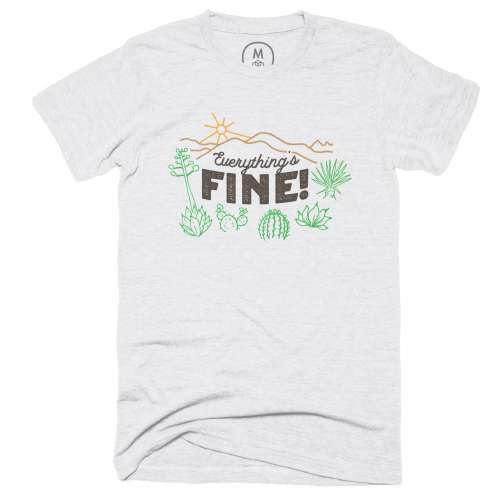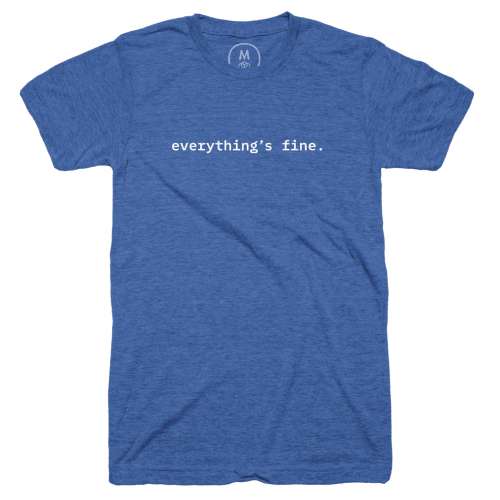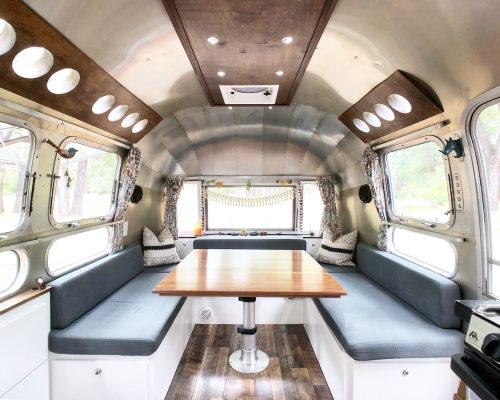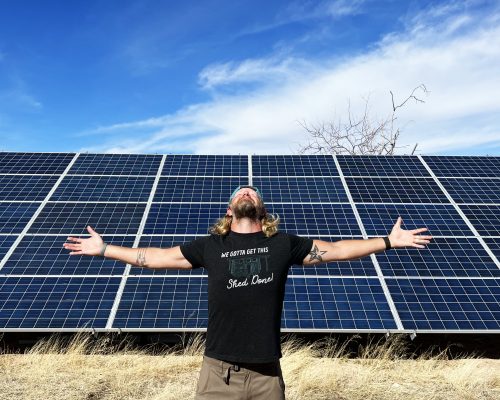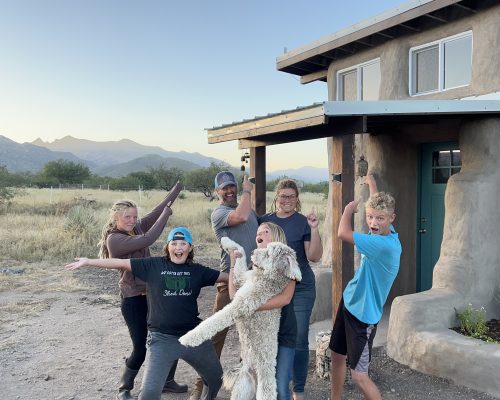Natural Building is the Future - Here's Why
Since moving to Arizona 4 years ago and starting our own natural building journey we’ve seen an explosion in interest, ideas, methods, creativity, and community - all around creating a life that’s more natural and sustainable than the one we left behind.
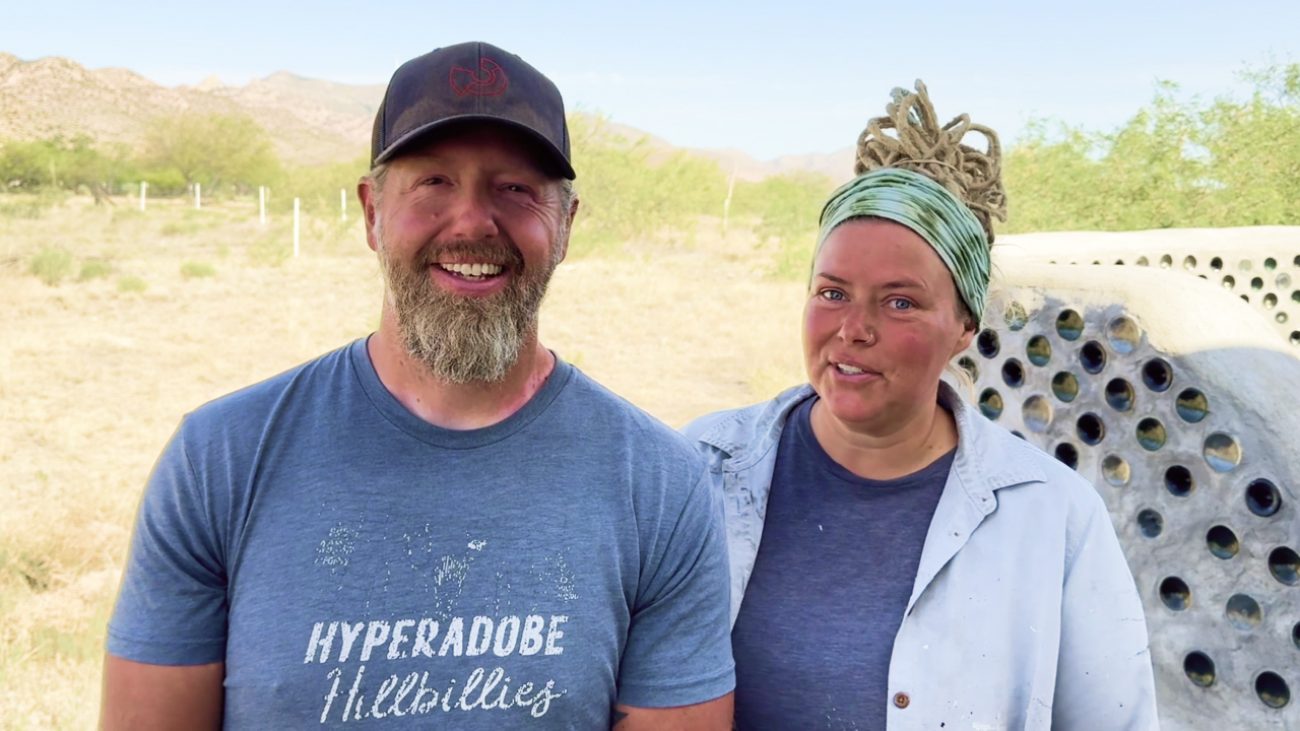
Hi there, we're Jonathan & Ashley - aka Tiny Shiny Home.
Our family is building an off-grid desert homestead from the ground up - literally.
Today we're here to ask why? Why are so many of us searching for something simpler? Why are we drawn to these alternative building methods? And why is this movement so important?

Image by: Shellapic76
Localized Materials & Transportation
First, let’s talk about how we got here. Because historically when we used to build stuff we relied on the local environment and its resources.
- The Great Pyramids of Giza used local limestone quarries for the majority of their blocks 1
- Early sections of the Great Wall of China were made using local rammed earth - with some parts still standing today 2
- The Pont du Guard brought in over 50 tons of rock from a nearby quarry 3
- and the Temple of Petra is literally carved out of a mountain 4
But as we moved into the industrialized age, this all started to change. Coal mining gave way to the steam engine which allowed locomotives and steamboats to transport building materials quickly over long distances.
A company that made 2x4’s locally could now ship them anywhere, which meant production needed to increase which meant factories and trade routes and infrastructure and building codes now that everyone could get the same things to build with.
And at the time this wasn’t a bad thing. The progress that was made during the industrial revolution dramatically increased our quality of life. We got electricity, modern medicine, and running water. Did you know that our lifespans have more than doubled since the 1700’s? 5
But however good those intentions were all those years ago, the industry has reached a scale that has started to tip back in the other direction.
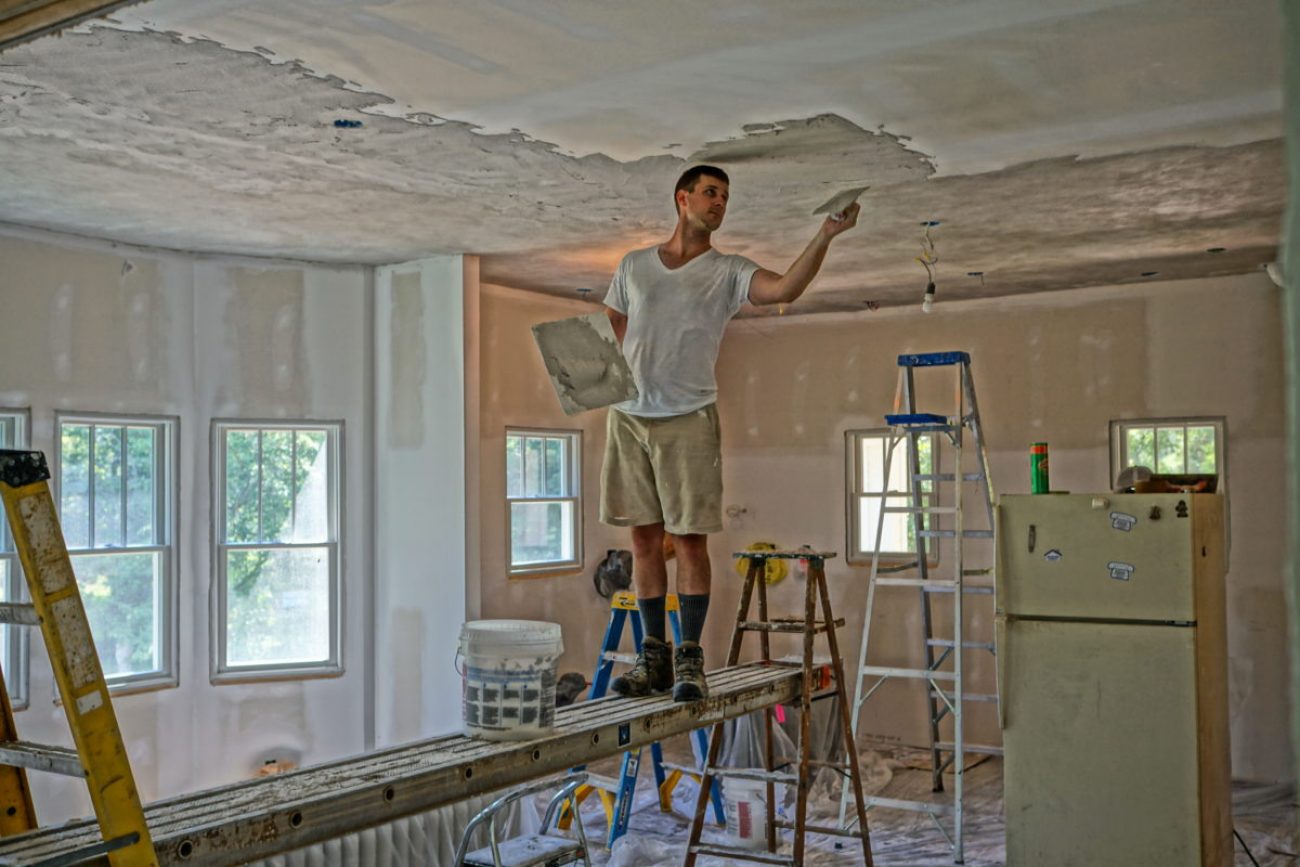
Image by: Blaine Hust
Chemicals & Toxins in Modern Construction
We’re starting to see the true cost of massive manufacturing scale, and it’s not good. The construction industry accounts for:
- 40% of worldwide energy usage
- 23% of air pollution
- 50% of climatic change
- 40% of drinking water pollution
- 50% of landfill waste.
- Not only that, but it’s been estimated that the construction industry also accounts for 25% of non-industrial waste each year. 6
That’s just what it takes to make the stuff. And the stuff we’re making? Also full of chemicals and toxins.
The paint we put on the walls are full of VOC’s (Volatile organic compounds) which can cause cancer and birth defects. The fire retardants in furniture and textiles have PBDE’s (Polybrominated diphenyl ethers) which can cause tumors and thyroid issues. Formaldehyde is still used in particle boards, plywood, and can cause respiratory problems. 7 8
You know before I started researching for this knew it was bad. But this bad? I had no idea.
But we aren’t here for doom and gloom. We want to see a better way forward. We know the current way of building a house isn’t good. So let’s talk about how we can make it better.

Cost + Accessibility
The average cost to build a house in Arizona in 2024 is anywhere from $300k to $600k dollars! One website I ran across said to set aside $100k just for framing. I think it’s safe to say we’ve reached a point where being able to build a traditional house is out of reach for most of us. 9
Which really sucks. Being able to build a safe, permanent dwelling as cost effectively as possible shouldn’t feel impossible. It contributes to the homeless population, adds tons of stress on those of us trying to play by the rules and get a mortgage.
I think natural building can help put the power back in our hands to build ourselves, and not spend the next 3 decades of our lives in debt trying to pay off the place we’re living in.
Programs like the Owner-Builder Opt Out where we live in Cochise County Arizona allow individuals to design, construct, and create their own structures with limited inspections and oversight. 10
This means you don’t need to spend thousands of dollars in fees, permits, or engineering plans - nor do you need to be a licensed contractor, plumber, electrician, or professional to create your home.
And as we all know, alternative building is a perfect way to offset many of those costs since we can source local and natural materials at a fraction of the price.
So I think we can all agree that natural building is an important step towards creating affordable and accessible housing for those who don’t want to incur massive amounts of debt.
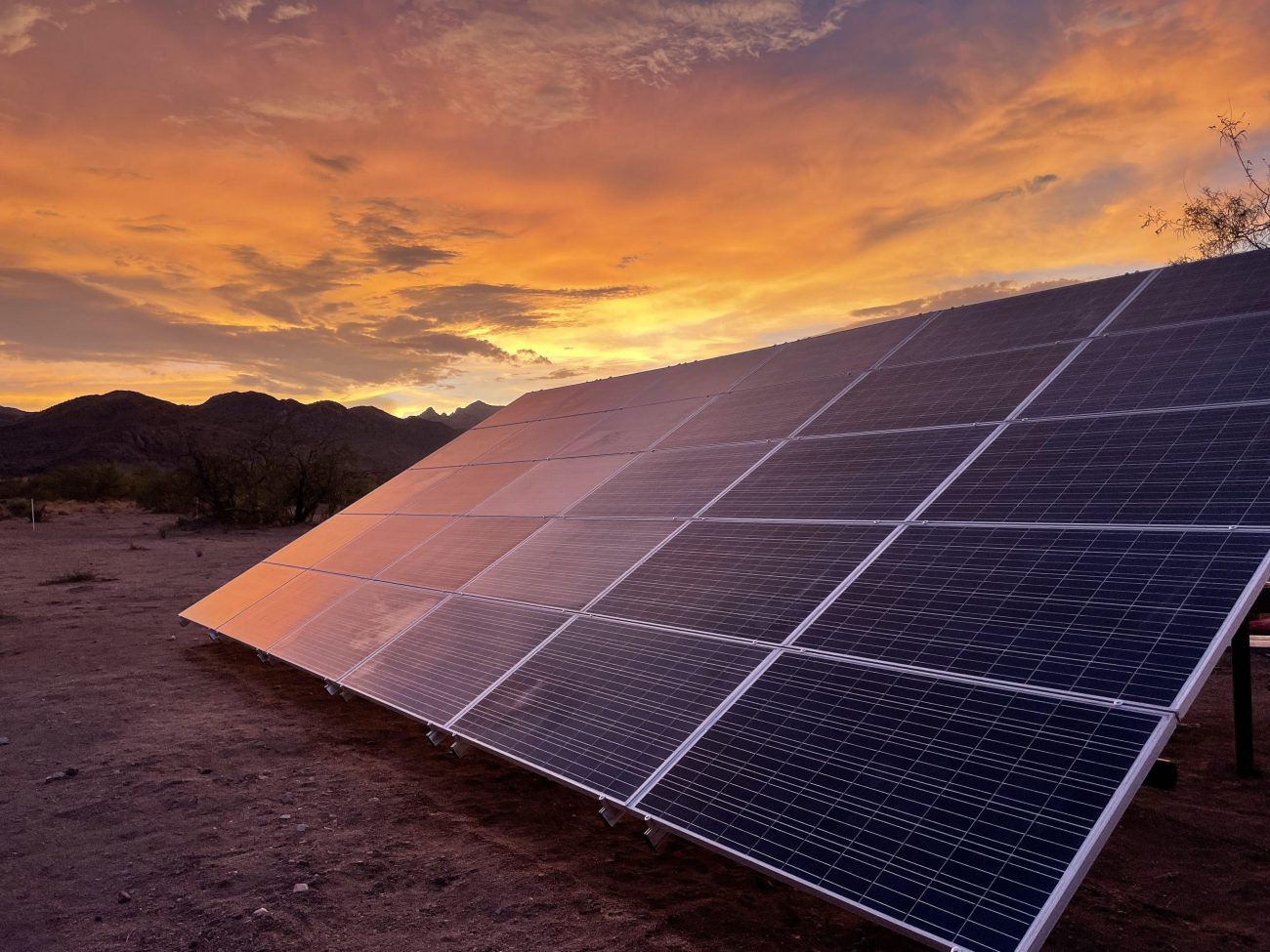
Efficiency
We said earlier that the construction of our houses and businesses account for about 40% of global energy usage. But just living in them adds another 20%-25%. So between the two over half of our worldwide energy usage comes from these buildings. 11
So the second way we can make this better is not only finding more energy efficient ways to build, but also more efficient ways to insulate, heat and cool what we’re building.
This makes total sense. Taking dirt from your own property and shoving it into a bag to make a wall saves gas, transportation, money, and by not relying on big machines or generators you’re creating a safer, quieter, and less polluted work environment.
There is something pretty magical about working with your hands in the dirt, soaking up the sounds of nature around you. Feels good, right?
That doesn’t mean it’s faster, though. Yes there are tradeoffs my friends. Choosing the path less traveled may come with some obstacles, and the sheer amount of physical labor is definitely one of them. That’s why community is so important, but we’ll get to that in a minute.
Natural building can also be more energy efficient.
Strawbale and cob create a densely insulative wall structure. And earthbags use thermal mass to pass energy through while keeping temperatures stable.
Combine that with solar power, natural heating and cooling elements, and we have a real opportunity to build a house that performs better than any modern stickbuilt house.
A lot of these ideas are ancient, weird, they’re very non-traditional. But that is what makes them so powerful. At a time when the construction industry needs a shakeup, it’s going to need people like you taking big risks and asking big questions to help move us forward.
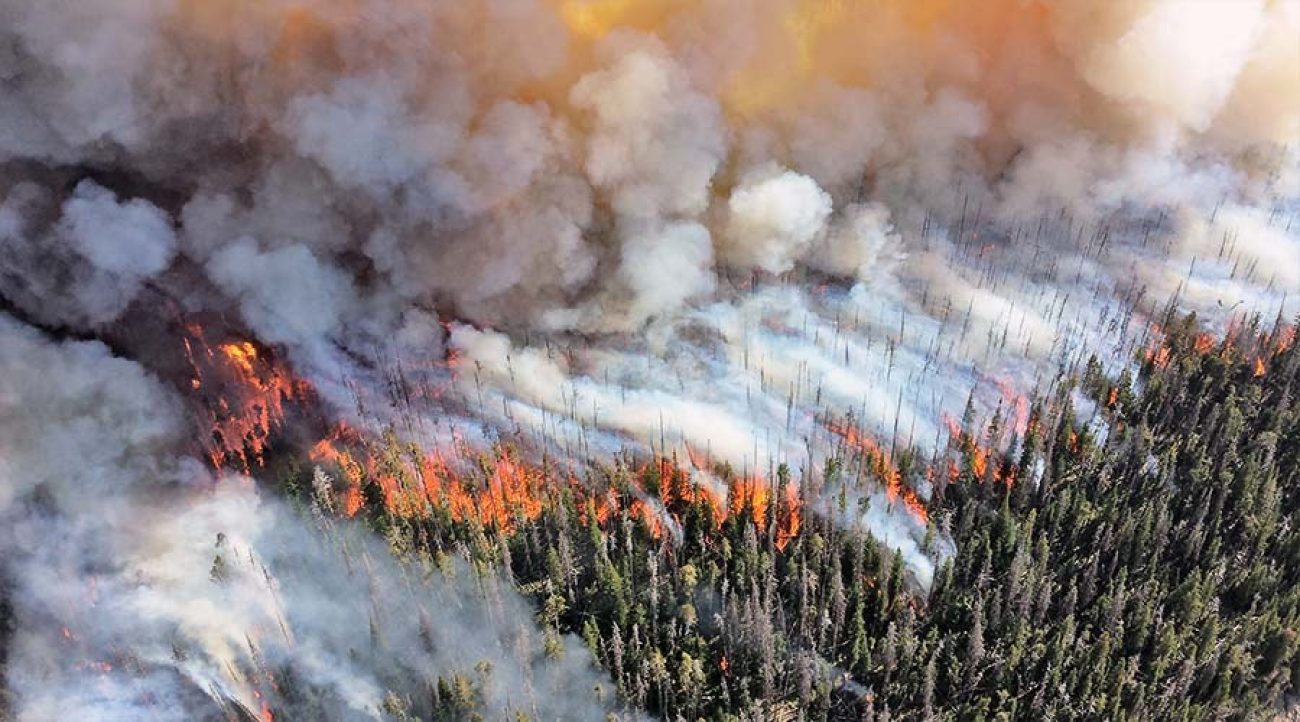
Image by: Mike Lewelling
Fire and Earthquake Resistance
How else can natural building can be better than traditional builds? Earthquake and fire resistance.
Earthbag buildings, especially domes with barbed wire reinforcement, have been shown to hold up remarkably well to seismic activity. 12 Anything circular and interlocked is going to fare better than a bunch of sharp corners. When we build with the earth and into the earth, we create a strong, but flexible structure that allows the quake to move through it.
Let’s talk about fires. Recent research has shown that forest fires are burning twice as much tree cover as they did 20 years ago. 13 And with increased droughts and stronger winds, we are all aware of how dangerous a small spark can be here in the desert, too.
Good news is, dirt doesn’t really burn. So earthbag, rammed earth, and cob walls are all inherently very fire resistant. Properly packed straw bale walls shouldn’t have oxygen for combustion, and most of our natural builds will also have an earthen or cement based plaster layer that will also slow down ignition. 14
Since we’re more in tune with what our land is doing, we’re likely adding additional protection like berms and swales. These are trenches on contour that stop sheet flowing water and grow trees quickly to slow down wind and fire in front of primary buildings.
Again, we’re reaching back into the past for many of these ideas, and finding they are still incredibly relevant.
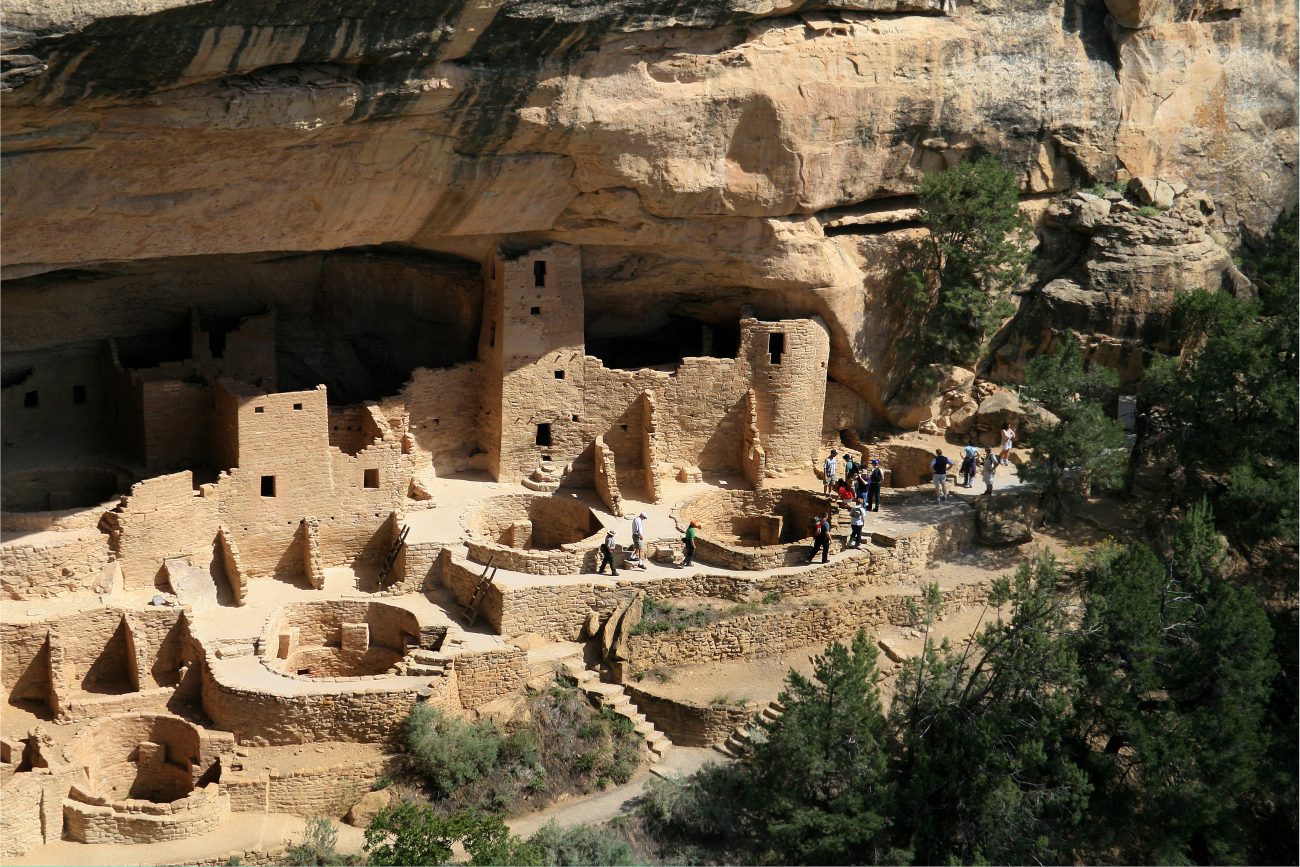
Image by: Lacee Curtis
Longevity + Breakdown Over Time
Speaking of the past, natural buildings have proven to be incredibly resilient to time as well.
At least 175 of Unesco’s world heritage sites are built with earth.
- The Grand Mosque of Djenné in Mali was built in 1907. It remains one of the largest mud brick buildings in the world. 15
- Like we mentioned earlier, parts of the Great Wall of China have several kilometers built from earth where stone wasn’t available. These sections are nearly 2500 years old. 16
- Here in the US, Mesa Verde is home of the Cliff Palace - an incredible cliff dwelling made of local stand stone rocks, mortar and wooden beams over 800 years old. 17
- Taos Pueblo features sun dried bricks making up walls several feet thick, timber roofs packed with more dirt, and thin washes of white earthen exterior. It’s believed to have been built between 1000 and 1450 AD. 18
- Bandelier National Monument remains one of the coolest places we’ve ever visited with cavates carved out of the volcanic cliffs that are over 800 years old. 19 20
Now that’s some natural building.
Modern stickbuilt homes are estimated to last anywhere from 30 to 70 years. 21 I don’t know about you, but our goal on our homestead is to build something that lasts for generations. Something that hundreds of years from now is still standing and strong.
Yes, it takes longer to build this way. But when you put it up against a house that costs 10x as much and barely lasts a single lifetime, this is what we’re fighting against, right? The investment that is unsustainable for most of us. The declining quality and longevity after we’ve spent so much of our lives paying for this thing.
Natural building is opening the door to change all that. Who knows, our properties might end up being national monuments one day cause they just won’t fall down. It could happen :)
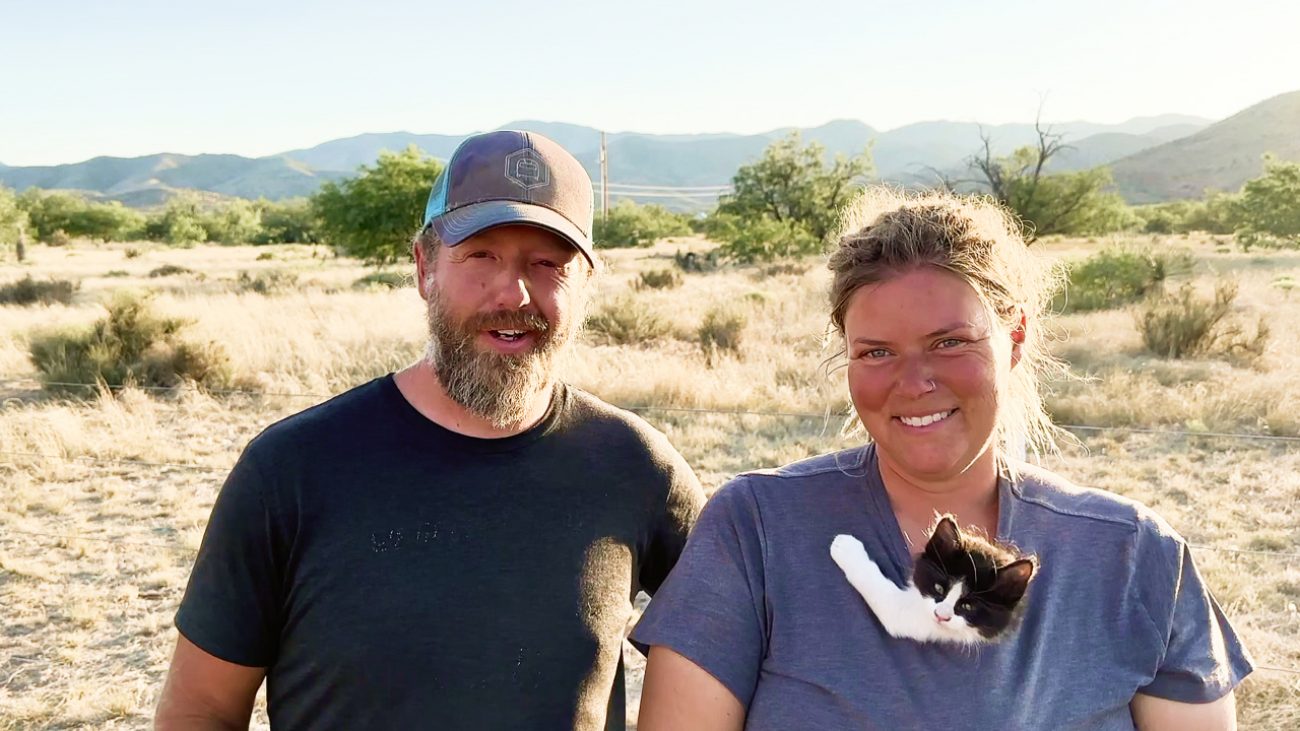
Mental & Physical Health
Another reason many of are looking to get back to a simpler life is just the overwhelmingness of modern society. Everyone seems to be stressed, sick, depressed, unhappy, out of shape.
Choosing to build alternatively sort of naturally puts us in a position to sidestep a lot of that. We get to be outside in nature.
Did you know that nearly 4 out of 10 people in the US have a Vitamin D deficiency? And did you know that Vitamin D affects everything in your body from bone and joint pain to muscle cramps, tiredness and depression? 22
We’re breathing clean fresh air, feeling the wind, and letting our bodies adapt naturally to the changing seasons. We’re building and making important things with our hands that give us purpose.
Even better, we know that we’re building in sustainable ways that will help preserve our local ecosystems and keep us feeling good about the choices we’re making.
All of those things add up to a much healthier outlook on life, better physical and mental health, and the knowledge that we’re taking action and making a difference.
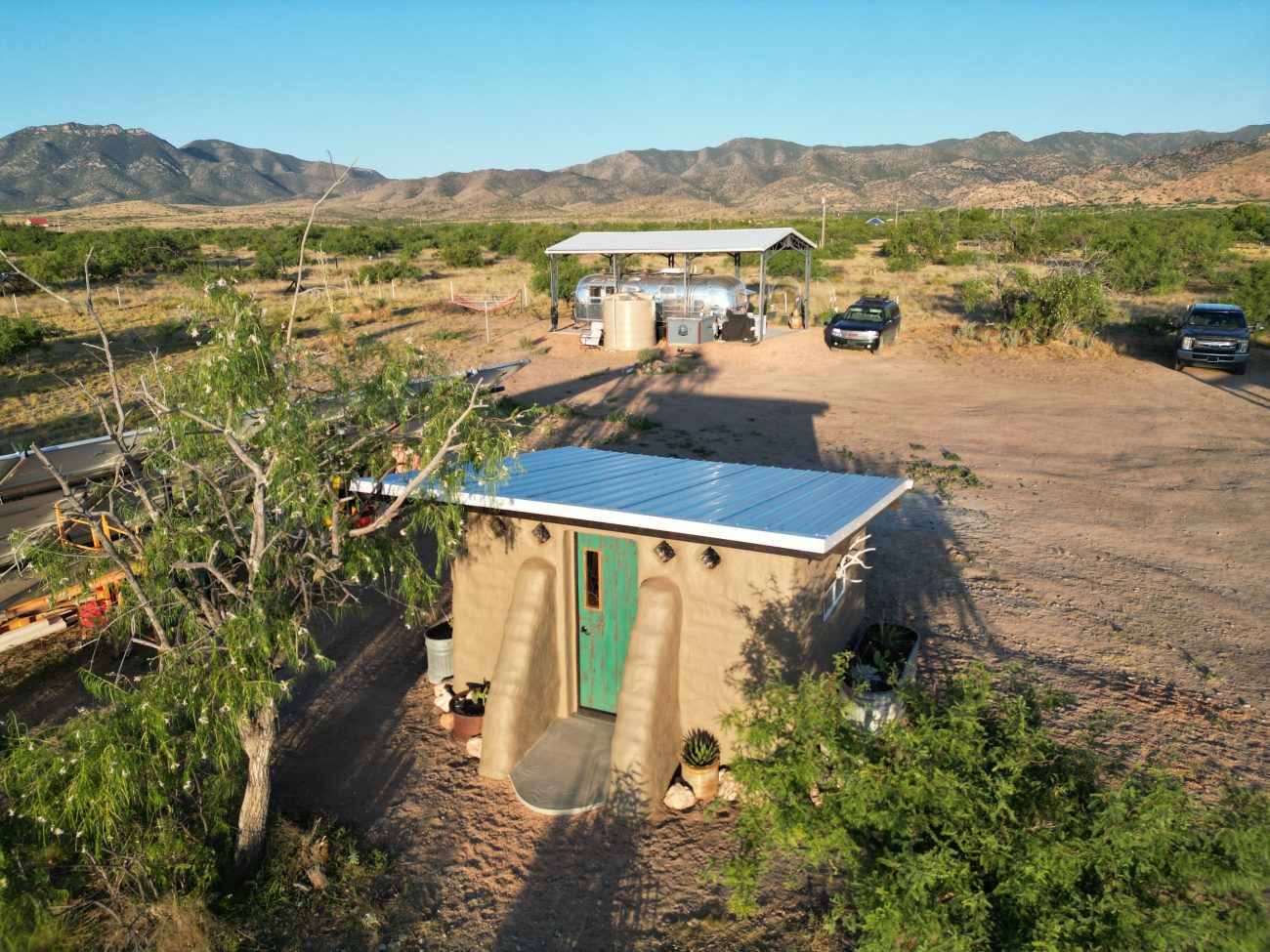
Experimenting & Creativity
Traditional building requires a ton of math, and rules, and sameness.
So something that really excites me about natural building is the opportunity to experiment. To be creative. To find the art in what we’re making, and not just the function.
Whether that’s designing an entire space specifically for how you want to use it - or experimenting with recycled bottles to create something beautiful and unexpected - the wonderful thing about all of this is that while there are plenty of people that have gone before you and shared their wisdom, there also still plenty of room for you take that, remix it, and call it your own.
Most of us aren’t working with a large crew on a tight timeline focused on squeezing every bit of profit out of a build. So we get to sweat the details, make our art, and hand craft something personal and special.
This is increasingly being lost - that a human touches the thing they’re making with purpose, intent and meaning. Natural building is always going to make sure we’re getting our hands dirty.
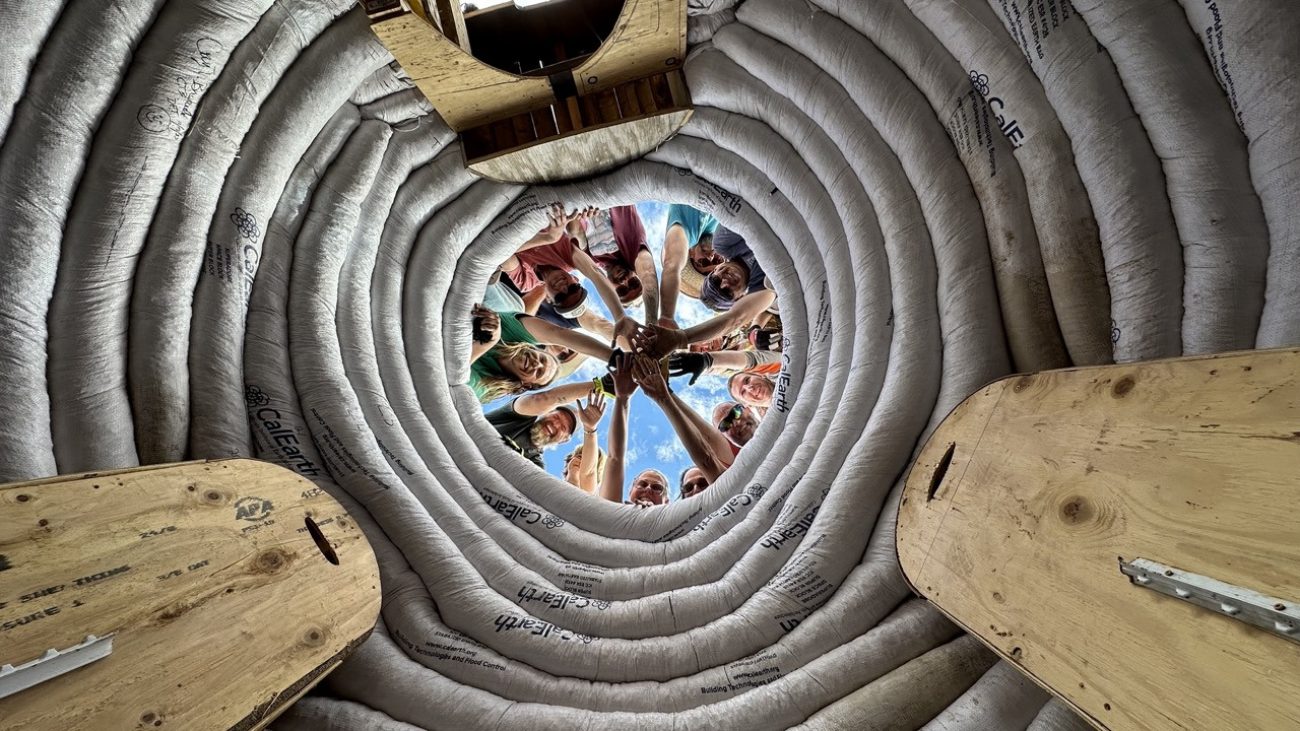
Better Future + Community
Finally, I believe that building alternatively creates community and helps us grow towards a better future.
Over in our neck of the woods we’ve seen several “barn raiser” type communities spring up. Everyone comes together to help an individual with a specific part of their project, making massive progress in a short amount of time.
This happens on a regular schedule, and everyone is more than happy to help their neighbor get through a difficult part of a build. There’s a shared sense of knowledge and community that just isn’t present in a suburban neighborhood because we’re all working towards the same goal.
We’ve also found community online. As we’ve shared our journey on YouTube, we’ve been amazed over and over at the support of those watching, and even coming to our workshops and events to learn more about what we’re doing.
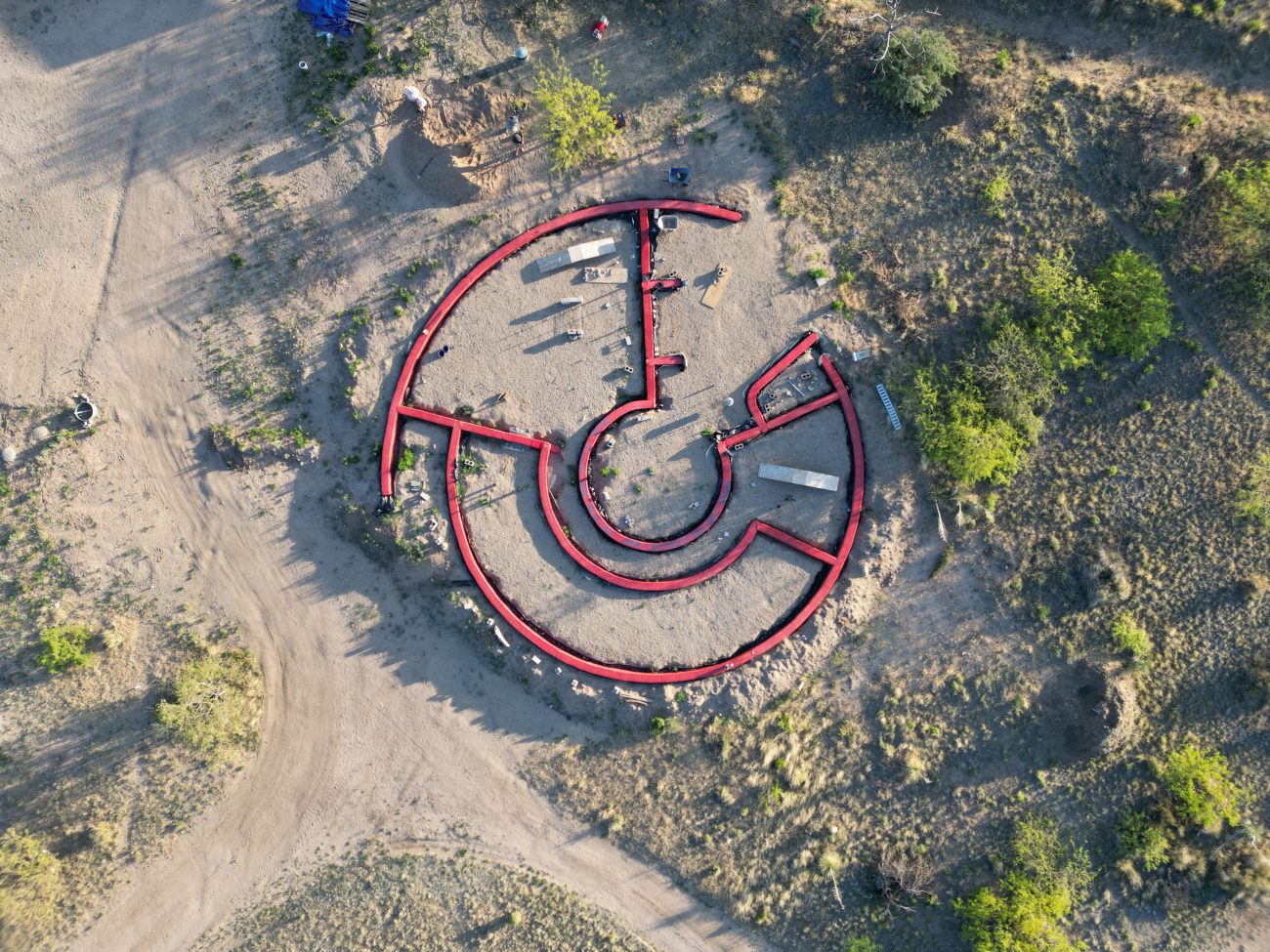
What Now?
Well, that’s up to you! We hope this whole idea of building naturally and alternatively inspires you to think differently about the buildings we live in. There’s so much opportunity to find a better way to build - and the good news is it can look different for everyone!
Here on our off-grid desert homestead we've spent the last 4 years experimenting with hyperadobe earthbags, superadobe earthbags, natural plasters, and recycled bottle bricks. This includes our solar shed office, chicken garden, dome home, and composting toilet outhouse. We’re even in the middle of a gigantic earthbag roundhouse build for our family home.
But we’ve also worked on re-building storage tents, putting up a recycled steel metal truss RV cover, and rehabbing a shipping container into a goat barn. Most of our earthbag buildings even have traditional roofs on them so we can catch rainwater and add solar panels for power.
I guess what I’m saying is there’s no one right way to start building more naturally. Different projects have different requirements, and everyone is welcome. Because if we all do a little bit it can make a big impact.
So let’s band together and start working towards safer, more natural and sustainable tomorrow.
References
There are lots of numbers, stats, and claims in this article. I've taken the liberty of linking them here if you'd like to do more of your own research.
- Great Pyramid of Giza
- Great Wall of China
- Pont du Guard
- Temple of Petra
- Industrial Revolution
- Construction Stats
- Health Benefits of Natural Earthen Construction
- Flame Retardants Cancer
- Cost to Build a House in Arizona 2024
- Cochise County Owner-Builder Opt-Out
- Global Energy Consumption
- Earthbag Seismic Safety
- Forest Fire Trends
- Straw Bale Fire Resistance
- Grand Mosque of Djenné
- Great Wall of China
- Cliff Palace Mesa Verde
- Taos Pueblo
- Bandalier National Monument (history)
- Bandalier National Monument (carved in stone)
- New Home Construction
- Vitamin D Deficiency
Apparel
Grab a fun, comfy t-shirt & help support our family.
comments powered by Disqus


